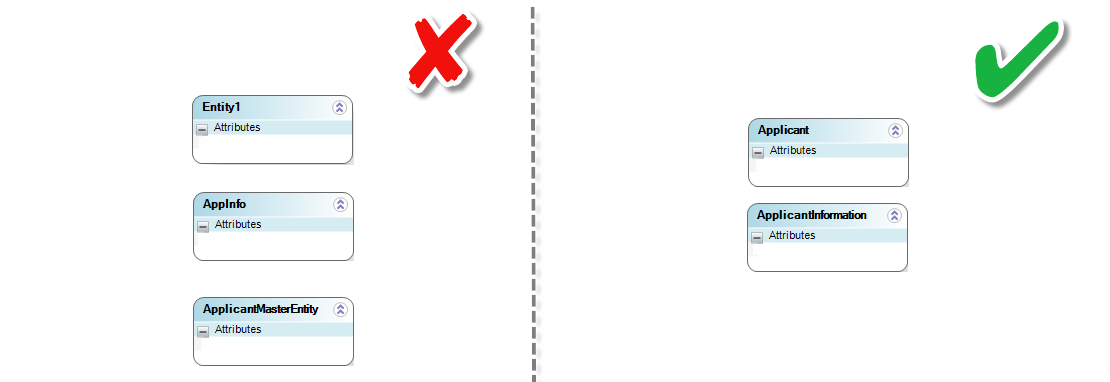Data Model Nomenclature and Standards
Overview
The following section lists suggested nomenclature so that you define your Data model in a way that promotes usability, maintainability, and legibility for you and your team members.
A clear and standard naming of the different entities and attributes of the Data model is fundamental for intuitive and easier building (i.e XPath navigation) and communication, and for a better understanding of the processes for any team member doing changes.
Entities Nomenclature
By relying on a standard to name your entities, you will save time during the implementation of your projects and when doing changes to them in the future.
1. Entities Definition
Entities names should clearly describe the information they contain. Make sure that you do not use short names or abbreviations.

2. Suggested Nomenclature for Entities
We recommend using a nomenclature for entities that clearly identifies its type:
- Entity Type (Master, Parameter).
To facilitate the generation of reports, it is suggested to use the following infix character for entity types:
- P: Identifies the entity as parametric.
- M: Identifies the entity as master.
Examples
-
Entity: Customer
Type: Master
Name: M_Customer -
Entity: City
Type: Parameter
Name: P_City
Attributes Nomenclature
By relying on a standard to name your attributes, you will save time during the implementation of your projects and when doing changes to them in the future.
1. Attributes Definition
Give attributes a short and clear name that allows an easy mapping when designing forms, expressions, or when configuring interfaces.
It is recommended to try to use the same name that will be displayed in the Forms.
2. Suggested Nomenclature for Attributes
We recommend using a nomenclature for attributes that clearly identifies its type, by relying on prefixes.
Note that names of attributes should have less than 15 characters (including any prefix it may have).
Use singular names for them, though use plural names every time you use collections, e.g., xRequests, xCustomers, xDocuments.
The following table shows the suggested prefixes according to the attribute type:
| Attribute Type | Prefix | Example |
|---|---|---|
| Boolean | b | bCustomer, bActive |
| Currency | c | cSalary, cDiscount, cPrice |
| Date – Time | d | dBirth, dCreated |
| Integer, Big Integer, Small Integer, Tiny Integer | i | iDistance |
| String, Extended Text | s | sNotes |
| File | u | uPhoto, uAttachment |
| Float | f | fRate, fDiscount |
| Image | img | imgProfile |
| Real | r | rGreatDistance |
| Entity | km, kp, ks | kmCustomer, kpCurrency, ksUser |
| Collection | x (plural names) | xElements, xRequests, xMembers |